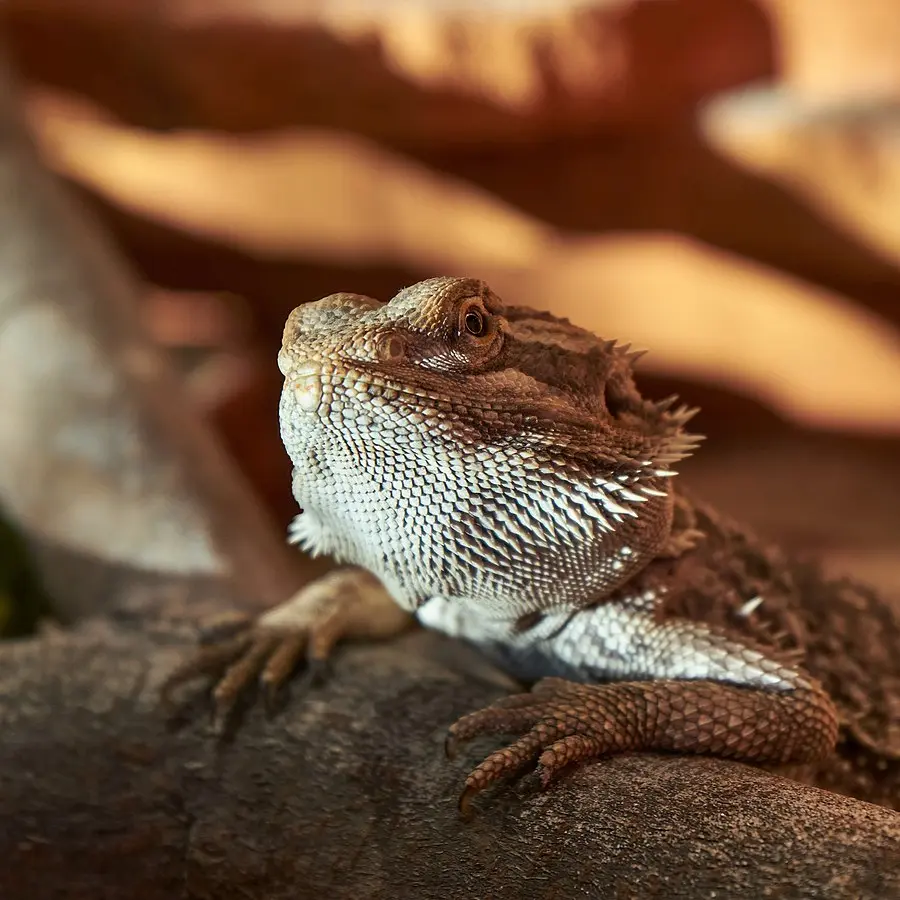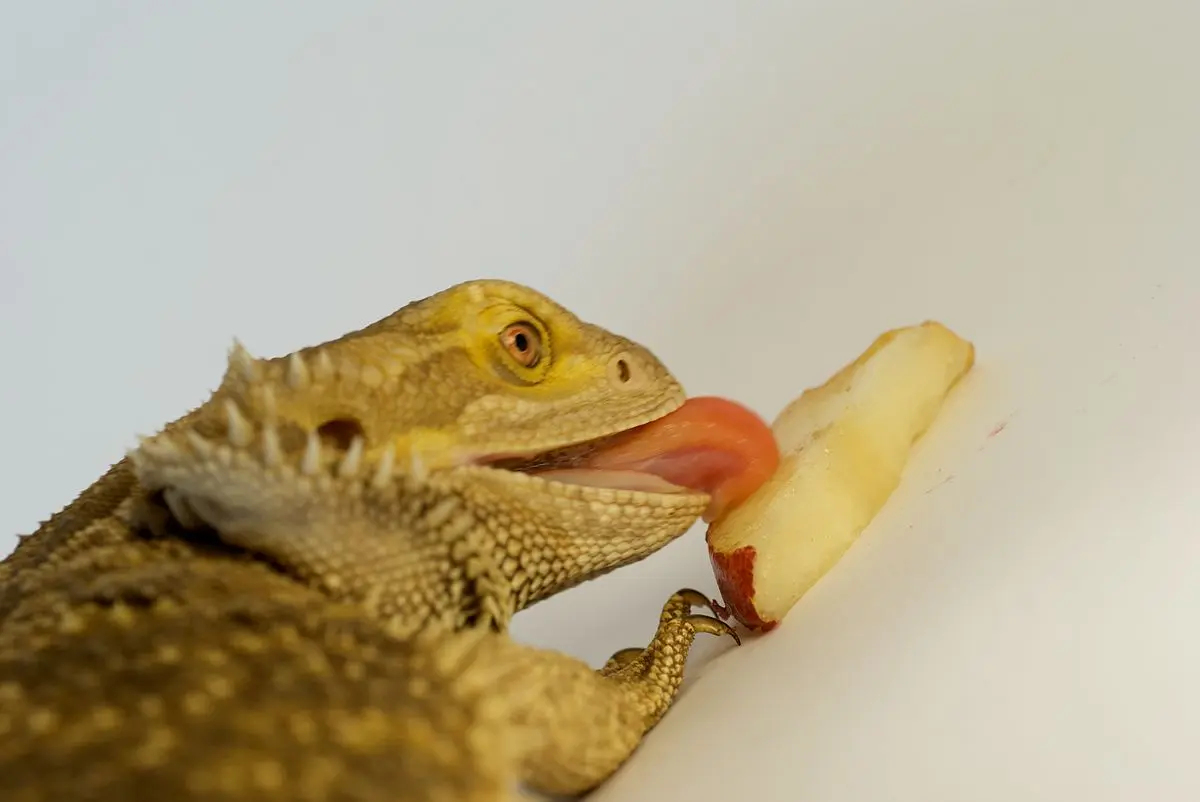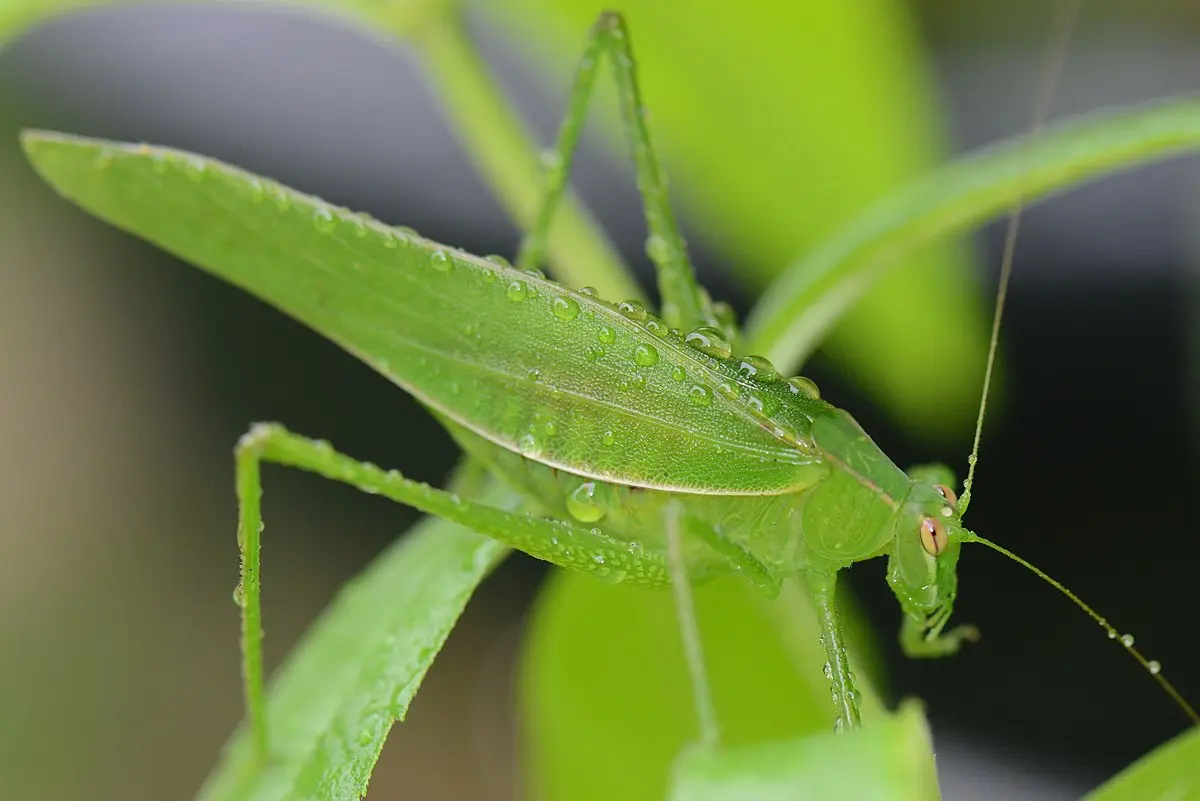You thought your shopping list was weird before you got a bearded dragon. Milk, eggs, cereal, apples, crickets…wait, crickets? Oh yes, for the uninitiated, acquiring a bearded dragon means entering a world where bags of live or dried insects are a staple in the household.
Indeed, they’re the delicacies that might just have your beardie showing you its version of a wagging tail. Get ready to explore nitty-gritty of the bearded dragon’s culinary world!
First, what are Bearded Dragons?

These moderate-sized lizards belong to the reptile family and are native to Australia. Part of the Pogona genus, these beardies encompass eight diverse species, with the most popular being the Central (or Inland) Bearded Dragon, Pogona vitticeps.
Bearded dragons get their name from the unique habit of extending and darkening a spiky, beard-like appendage underneath their jaw. This dance routine is usually performed to mark their territory, express dominance, or just to flirt a little. Yes, even beardies have their version of a dimpled smile!
A Bearded Dragon’s Diet

In the wild, these bushy-bearded lizards are ‘opportunistic omnivores,’ which, despite sounding like a descriptor for someone who raids the fridge at midnight (you know who you are), means that they’re not fussy. Their food includes a delightful smorgasbord of insects, vegetation, and even the occasional small rodent. Yet, when in our domain, their diet does require some regulation to keep them healthy and jazzed up.
List of Insects Bearded Dragons Can Eat

Vets and dragon-lovers alike have given their seal of approval to the following crème de la crème of the bearded dragon’s insect diet:
1. Crickets: The Beardie’s Bug-er… Burger?
Arguably the most popular and nutritious option for our scaly friends, crickets are like the all-American burger (albeit with more legs) of the Beardie Bug Buffet. Packed with protein and easy to find at your local pet store, they’re the go-to for many devoted bearded dragon owners. But what makes crickets the pièce de résistance of the bug world? It’s their palatable exoskeletons and playful nature. Your beardie won’t miss a leg-day chasing these jumpy snacks.
2. Mealworms: Noodle-like Nutrition
For an insect-eating bearded dragon, mealworms could be considered the spaghetti of their menu. These little golden nuggets of nutrition are rich in protein and quite filling for your scaly companion. However, be cautious not to overfeed these treats, as they have a high fat content, and we wouldn’t want your lizard-buddy to turn into a chubby-dragon now, would we?
3. Dubia Roaches: Not Your Garden-Variety Roach
Roaches, right? Ew! Except, no. Not in this case. Dubia roaches bear the accolade of being your bearded dragon’s top choice when it comes to the roach department. In addition to their high protein levels and low fat content, they don’t stink (you read that right!), are surprisingly clean, and can’t scuttle their way up a smooth surface. Dubia roaches, you’ve officially redeemed your species in the eyes of beardie owners!
4. Silkworms: Beardie-Friendly Bug-ritos?
There’s just something about these juicy, protein-packed snacks that beardies can’t resist. Silkworms, commonly used to produce luxurious silk, are a softer, easier-to-digest treat that won’t break a sweat for your bearded dragon’s jaws. Nutrient-dense and wriggling with goodness, silkworms offer a sumptuous feast for your beardie’s discerning taste buds.
5. Waxworms: The Bug Candy They Crave
If we step into the realm of the sweet-toothed beardie, waxworms qualify as the irresistible candy of the insect world. They’re a rich, fatty delicacy that beardies find hard to resist. While not an everyday snack, they make for the perfect way to show your beardie a little extra love now and then. To maintain your lizard’s good health, waxworms are best served in moderation—think cheat-day or celebratory dessert.
6. Hornworms
One look at a hornworm, and you might think you’ve landed in a sci-fi flick. These bright-blue caterpillars provide a refreshing change of pace in your beardie’s diet. Not only are they soft, inviting easy chomping, but they are also moisture-rich.
7. Superworms
Think of superworms as mealworms who’ve hit the gym and bulked up a bit. They’re larger, making them a satisfying treat, especially for adult bearded dragons. With the potential to turn your beardie’s mealtime into a more exciting hunting game, superworms are indeed the superheroes of the worm world. Just remember, these muscular morsels pack a high dose of fat, so it’s best to serve them as a reward or periodic treat.
8. Butterworms
Butterworms are another fatty treat that bearded dragons find irresistible. It’s almost as if they’ve been deeply marinated in bearded-dragon-joy-juice (not a real thing, but you get the point)! However, due to their richness, you should dish out these soft, butterlicious bugs sparingly. Imagine them as your beardie’s equivalent to buttered popcorn during a movie – decadent, delicious, but not something you’d want to binge on every night.
9. Phoenix Worms: Calcium-Loaded Champs
Phoenix worms, also known as calci-worms, are the calcium-enriched superheroes your Beardo didn’t know they needed. This high-calcium diet is especially helpful since beardies often suffer from calcium deficiency in captivity. So, not only do these wriggly champs knock the flavor out of the park, but they also help keep your bearded dragon sturdy and robust. Not all heroes wear capes, some wriggle, huh?
10. Silkworms Pupae and Moth
Bearded dragons can enjoy both silkworms and their evolution product – the moth. They’re as nutritious as they are smooth and easy to digest, making them perfect for the beardie with a sensitive stomach.
11. Cockroaches
Roaches, anyone? From American to Dubia, from hissing Madagascars to woodies and Turkestan, there is a wide variety of roaches that your beardie can enjoy. Just be careful when preparing these scary critters; you wouldn’t want to find a roach skittering away on your kitchen floor!
12. Cowpea Weevil
Cowpea weevils, as unappetizing as they may seem to us, could be a special treat for a bearded dragon. These insects are crunch-tastic and have an exciting je ne sais quoi beardies can’t resist.
13. Flies (Bred for the Purpose)
House flies and their larvae, or even fruit flies, once they’re bred for the purpose, can make for a very animated dinner. It’s like watching a nature documentary unfold right before your eyes when your beardie ‘hunts’ for these!
14. Slugs and Snails
Next up, we have slugs and snails. Oh, the French would be proud! The equivalent of escargot for your beardie, these garden visitors are a gooey treat your dragon will get a kick out of chasing.
15. Spiders
‘Aragog, is that you?’ No, it’s just a regular spider on the menu. As long as its non-poisonous, spiders can provide essential vitamins and minerals to your dragon buddy.
16. Stick Insects and Termites
Stick insects and termites are like the tapas of the bug world. Quick, small bites that satisfy the palate and keep your beardie entertained.
17. Grasshoppers
Grasshoppers can play a major role in a bearded dragon’s diet, providing a good source of protein and variety in their diet. The grasshoppers must be properly gut-loaded and dusted with calcium before feeding them to the bearded dragons. Also, the grasshoppers should be bought from a reputable pet store or retailer, as they need to be raised specifically for consumption by reptiles and other pets
18. Earthworms: Oldie but Goldie
Last, but surely not least, we have the humble earthworm. These classic garden heroes can make it to your beardie’s grub platter too. High in protein and in love from Mother Earth herself, they are a traditional treat for bearded dragons. However, there’s a word of caution when serving up these soil-natives: make sure they’re sourced safely. Earthworms from gardens treated with chemicals or pesticides are a no-no!
How to Prepare Insects for Your Bearded Dragon

If you’re considering adding insects to your bearded dragon’s diet, it’s important to know how to prepare them properly. Here are some steps to follow:
- Purchase insects from a reputable source. Avoid catching insects in the wild, as they may have been exposed to pesticides or other harmful substances.
- Gut-load the insects before feeding them to your bearded dragon. This means feeding the insects a nutritious diet for at least 24 hours before offering them to your pet. This ensures that your bearded dragon gets the maximum nutritional benefit from the insects.
- Dust the insects with a calcium supplement before feeding them to your bearded dragon. This helps to prevent calcium deficiencies, which are common in reptiles.
- Offer the insects in a shallow dish or sprinkle them on top of your bearded dragon’s food. Be sure to remove any uneaten insects after a few hours to prevent them from escaping and potentially harming your pet.
- Monitor your bearded dragon’s behavior and health after introducing insects to their diet. If you notice any signs of illness or discomfort, consult with a veterinarian or reptile expert.
Conclusion
Caring for a bearded dragon, as strange and different as it might sound, can be quite engaging. When done right, it’s an oddly charming mixture of gastronomic adventure and pet care. Remember, while your lizard buddy loves a good, juicy bug, moderation and variety are key to ensuring their health and happiness.
With this guide, you can rest easy knowing you’re providing the best cuisine to your new roommate, and see for yourself why bearded dragons are worth all the…bugging around!
